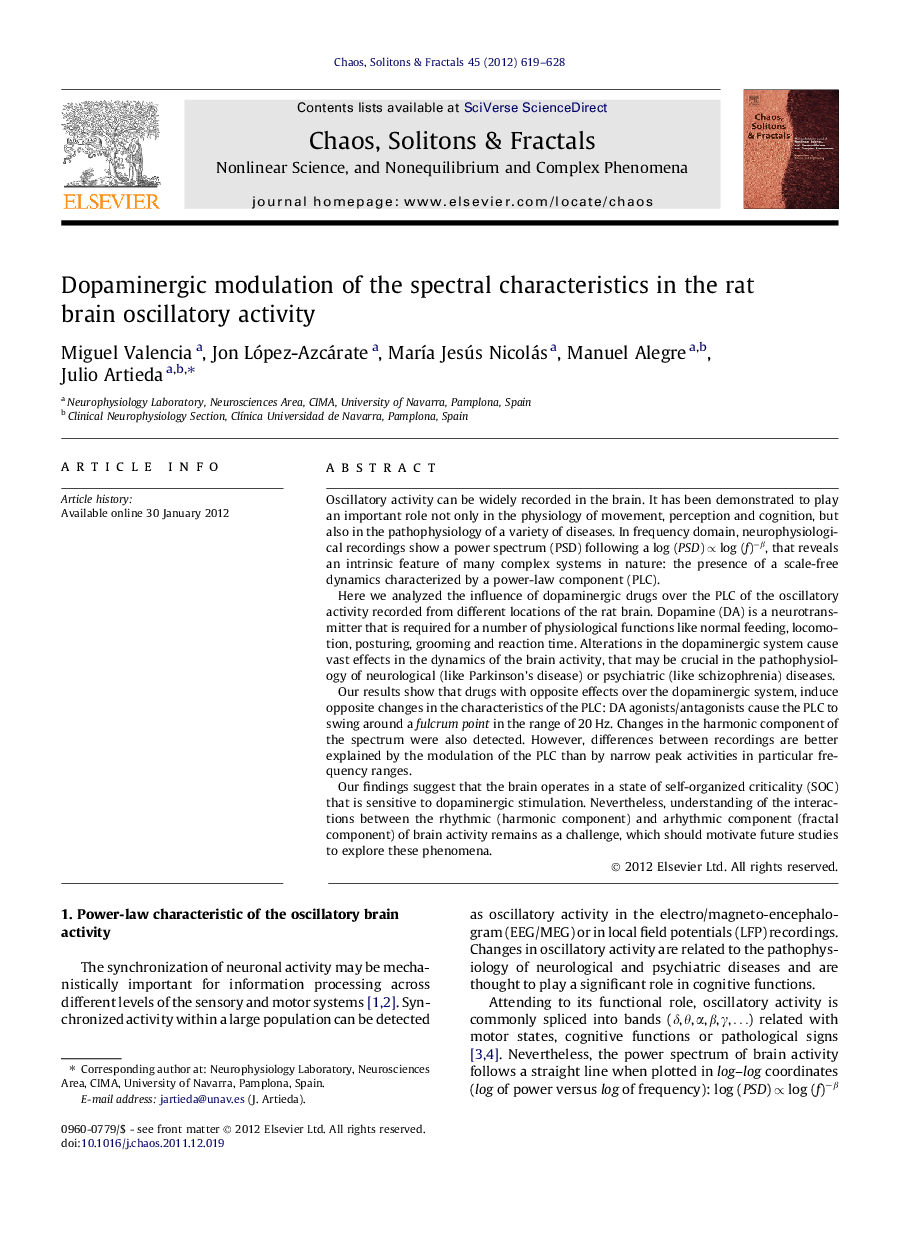| Article ID | Journal | Published Year | Pages | File Type |
|---|---|---|---|---|
| 1889542 | Chaos, Solitons & Fractals | 2012 | 10 Pages |
Oscillatory activity can be widely recorded in the brain. It has been demonstrated to play an important role not only in the physiology of movement, perception and cognition, but also in the pathophysiology of a variety of diseases. In frequency domain, neurophysiological recordings show a power spectrum (PSD) following a log (PSD) ∝ log (f)−β, that reveals an intrinsic feature of many complex systems in nature: the presence of a scale-free dynamics characterized by a power-law component (PLC).Here we analyzed the influence of dopaminergic drugs over the PLC of the oscillatory activity recorded from different locations of the rat brain. Dopamine (DA) is a neurotransmitter that is required for a number of physiological functions like normal feeding, locomotion, posturing, grooming and reaction time. Alterations in the dopaminergic system cause vast effects in the dynamics of the brain activity, that may be crucial in the pathophysiology of neurological (like Parkinson’s disease) or psychiatric (like schizophrenia) diseases.Our results show that drugs with opposite effects over the dopaminergic system, induce opposite changes in the characteristics of the PLC: DA agonists/antagonists cause the PLC to swing around a fulcrum point in the range of 20 Hz. Changes in the harmonic component of the spectrum were also detected. However, differences between recordings are better explained by the modulation of the PLC than by narrow peak activities in particular frequency ranges.Our findings suggest that the brain operates in a state of self-organized criticality (SOC) that is sensitive to dopaminergic stimulation. Nevertheless, understanding of the interactions between the rhythmic (harmonic component) and arhythmic component (fractal component) of brain activity remains as a challenge, which should motivate future studies to explore these phenomena.
► The oscillatory activity recorded at different locations of the rat brain present a power law characteristic (PLC). ► Dopaminergic drugs are able to modify the power law spectral characteristic of the oscillatory activity. ► Drugs with opposite effects over the dopaminergic system (agonists/antagonists), induce opposite changes in the PLC. ► There is a fulcrum point for the modulation of the PLC around 20 Hz. ► The brain operates in a state of self-organized criticality (SOC) sensitive to dopaminergic modulation.
